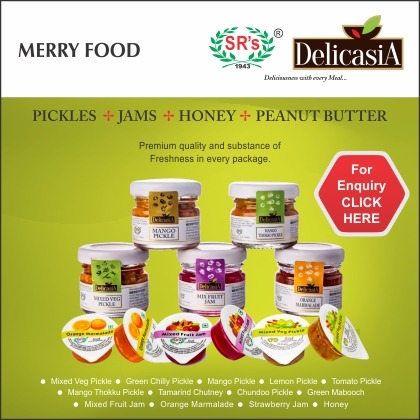Adapting to Changing Consumer Trends: Flexibility and Innovation in Menu Development
Adapting to changing consumer trends requires restaurants to be flexible, innovative, and customer-focused.

Adapting to changing consumer trends is crucial for
restaurants to stay relevant and competitive in the ever-evolving food
industry. With consumers becoming increasingly health-conscious,
environmentally aware, and adventurous in their culinary preferences,
restaurants must demonstrate flexibility and innovation in menu development to
meet their evolving needs and preferences. Here are some strategies for
adapting to changing consumer trends:
1. Embrace Flexibility:
Stay agile and responsive to changing consumer preferences by regularly updating your menu to reflect current trends and seasonal ingredients. Consider offering rotating specials or limited-time menu items to keep things fresh and exciting for your customers.
2. Cater to Dietary Preferences:
With an increasing number of consumers adopting specialized diets such as vegan, vegetarian, gluten-free, or keto, it's essential to offer a variety of options to accommodate diverse dietary preferences. Clearly label menu items with dietary information to make it easier for customers to find options that suit their needs.
3. Prioritize Sustainability:
As sustainability becomes a top concern for many consumers, prioritize sourcing ingredients locally, seasonally, and ethically whenever possible. Highlight eco-friendly practices such as composting, recycling, or reducing food waste to resonate with environmentally conscious diners.
4. Experiment with Alternative Ingredients:
Explore innovative ways to incorporate alternative ingredients such as plant-based proteins, ancient grains, or alternative sweeteners into your menu offerings. Experiment with trendy superfoods or global ingredients to add excitement and variety to your dishes.
5. Offer Customization Options:
Provide customers with the flexibility to customize their meals according to their preferences and dietary restrictions. Whether it's choosing their protein, sauce, or toppings, offering customization options empowers customers to create a meal that suits their taste and dietary needs.
6. Stay Informed about Trends:
Stay informed about emerging food trends by monitoring industry publications, attending food expos, and keeping an eye on social media platforms. Pay attention to what's popular among your target demographic and be proactive about incorporating new trends into your menu offerings.
7. Highlight Health and Wellness:
With an increasing focus on health and wellness, consider adding more nutritious and wholesome options to your menu, such as salads, grain bowls, or lean protein options. Use descriptive language to highlight the health benefits of certain ingredients or dishes to appeal to health-conscious consumers.
8. Collaborate with Local Suppliers:
Forge partnerships with local farmers, artisans, and producers to showcase locally sourced and artisanal ingredients on your menu. Highlighting the provenance of your ingredients not only adds a unique selling point but also supports the local economy and fosters community connections.
9. Embrace Global Flavors:
Incorporate global flavors and culinary influences into your menu to appeal to adventurous diners seeking new and exciting taste experiences. Experiment with ethnic spices, sauces, and cooking techniques to add depth and complexity to your dishes.
10. Solicit Customer Feedback:
Regularly solicit feedback from your customers through surveys, comment cards, or social media channels to understand their preferences and gather insights into their dining experiences. Use this feedback to make informed decisions about menu changes and improvements.
Adapting to changing consumer trends requires restaurants to be flexible, innovative, and customer-focused. By embracing flexibility, catering to dietary preferences, prioritizing sustainability, experimenting with alternative ingredients, offering customization options, staying informed about trends, highlighting health and wellness, collaborating with local suppliers, embracing global flavors, and soliciting customer feedback, restaurants can stay ahead of the curve and deliver memorable dining experiences that resonate with today's discerning consumers.
.png)




























